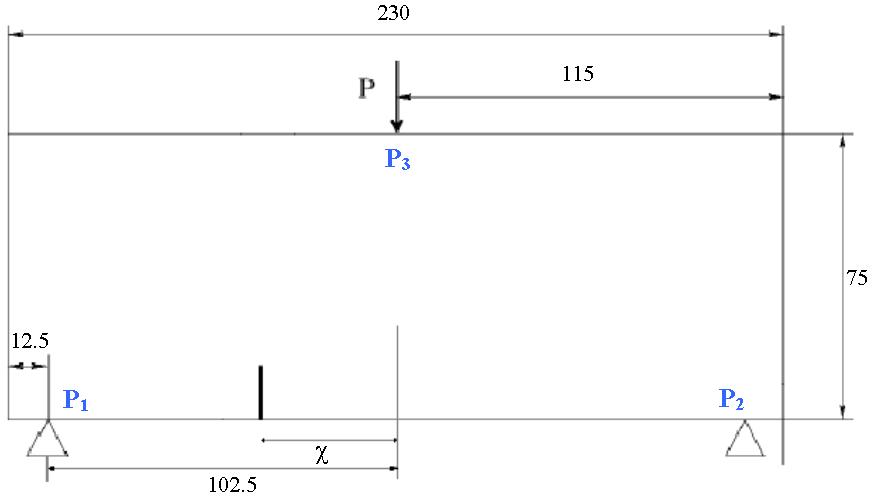1. Reference problem#
1.1. Geometry#
The geometry, dimensions, and materials are taken to be identical to those of Mariani et al. [1].
Structure \(\mathrm{2D}\) is a rectangular plate (\(230\mathrm{mm}\times 75\mathrm{mm}\)), with a through crack []. The length of the initial crack is \(a=19\mathrm{mm}\).
The nodes noted \(\mathrm{P1}\), \(\mathrm{P2}\), and \(\mathrm{P3}\) are used to impose boundary conditions, which are explained in paragraph [§ 1.3].

Figure 1.1-a : geometry of the cracked plate
1.2. Material properties#
Young’s module: \(E=\mathrm{31,37}{10}^{9}\mathrm{Pa}\)
Poisson’s ratio: \(\nu =0.2\)
1.3. Boundary conditions and loads#
Charging consists of applying a unit nodal force in \(\mathrm{P3}\).
In order to block rigid modes, we block the movements of nodes \(\mathrm{P1}\) and \(\mathrm{P2}\) as follows:
\({\mathrm{DY}}^{\mathrm{P1}}={\mathrm{DY}}^{\mathrm{P2}}=0\);
\({\mathrm{DX}}^{\mathrm{P1}}=0\).